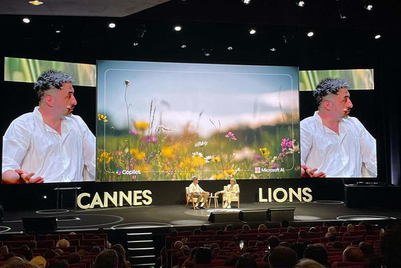
Based on AdAge Centre Data, out of a list of 18 of these pitches, Starcom Media Group has been involved at least eight pitches—the highest number out of all the major networks. This year alone, SMG has been defending three major accounts (P&G, Mondelez and Coca-Cola) and pursuing five more (see below).
However, it’s IPG agency UM that’s arguably under the most tremendous pressure, as its defends five accounts (Sony, L’Oréal, J&J, BMW and General Mills). Combined with sister agency Initiative, which is defending two accounts (Grupo Bimbo and Unilever), IPG’s media agencies are currently embroiled in defending 21 per cent of their media group’s estimated billings.
This is a followup article to our report on driving forces behind the flurry of major media account reviews
“This has placed massive pressure on agencies from a workload point of view,” said Greg Paull, principal of R3. “The other big issue is conflict, with so many balls in the air, which FMCG, automotive or financial firm will be the best likely partner for your agency?”
Agencies, he said, have to be selective on the pitches they choose to pursue. “You can’t win them all.”
These large account reviews can quickly escalate into the hundreds of millions in costs for the agencies, estimated Darren Woolley, managing director of TrinityP3. “Furthermore, a win can take over a year to reimburse if it’s successful.”
For this reason, it would be beneficial if agencies concentrated on client retention and growth as a business strategy rather than the pursuit of new business. “Agencies are tending to be pitching more these days, not less, and many have a tried-and-tested process for new business development and pitch delivery,” said Richard Bleasdale, regional managing partner of Roth Observatory Asia-Pacific. “So much so that some agencies even describe pitching opportunities as ‘good practice’ and base decisions on ‘why wouldn’t we pitch?’. But we believe this attitude is wrong and will only create burnout and dissatisfaction among agency team members in the long run.”
Existing clients will also take a hit as agencies redeploy resources, said Paull. “Existing clients will just have to suffer through this.”
Cost to media owners
But beyond the well-documented financial and human cost to agencies, pitches also take their toll on media owners, both during and after, pointed out several consultants. During pitches, media accounts may get suspended, which, in turn, suspends income for publishers.
Furthermore, with every pitch, as agencies fight to deliver more for less, it’s the media owners that end up getting squeezed, particularly in digital advertising, said Woolley.
“Media owners budget around 25 to 30 per cent incentives for traditional, and up to 80 per cent for digital,” he said, basing his estimate on report by the World Federation of Advertisers (WFA) published several years ago.
In 2012, the WFA called out China as the market with the highest media rebate levels in Asia-Pacific, followed by Indonesia, the Philippines and India. The report also found that in the region, 13 per cent of rebates were returned as free space, while most cash returns were annual, although 16 per cent were received monthly. Fourteen per cent of respondents also used rebates to reduce direct payments for agency remunerations.
Ultimately, the party that faces the highest cost in all this may be the publishers. “It’s very difficult for agency groups to get the deal book to balance with fees going down," said Martin Sambrook, international practice leader of media for pitch-consultants Ebiquity. "If you can’t offer the best price to all your clients, it’s hard to hold onto the business. Yet, profits for agencies inexorably seem to rise. I don’t think it’s the agency groups that are headed for the poorhouse.”
“It’s definitely an issue that marketers are underpaying agencies,” said Paull. “But media agencies remain the most profitable of all the agencies. It has to come from somewhere.”



.jpg&h=334&w=500&q=100&v=20250320&c=1)


.png&h=334&w=500&q=100&v=20250320&c=1)




.png&h=334&w=500&q=100&v=20250320&c=1)




.jpg&h=268&w=401&q=100&v=20250320&c=1)
.png&h=268&w=401&q=100&v=20250320&c=1)
.png&h=268&w=401&q=100&v=20250320&c=1)

